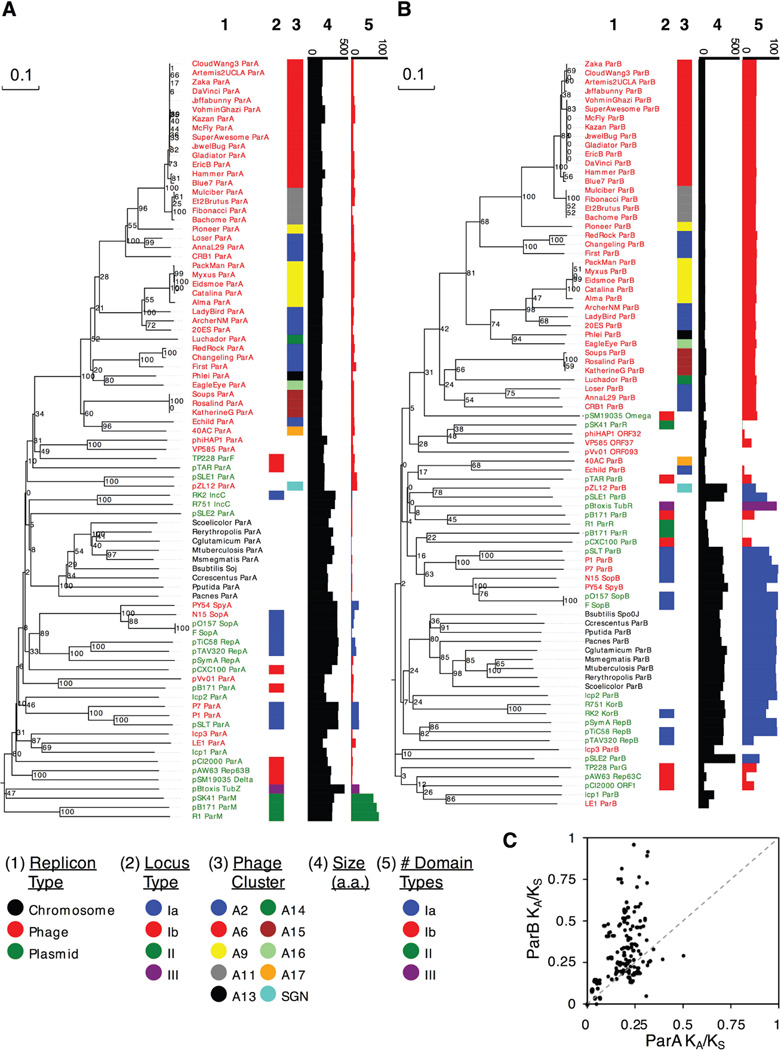Figure 2.
Phylogenetic comparison of ParA and ParB proteins. Phylogenetic comparison was performed on NTPase ParA-related proteins (A) and ParB-like centromere binding proteins (B) from 83 characterized and predicted partitioning systems representing different types of partitioning system (Ia, Ib, II, and III) and derived from various types of replicons (chromosomal, plasmid, and phage). Bootstrap values are indicated. For each sequence, the subcluster designation in the Actinobacteriophage_706 database is represented by color (if applicable), the amino acid size is displayed in a horizontal bar graph, and the frequency of categorized structural domains identified by HHpred analysis is displayed in a colored horizontal bar graph. We note that Leptospira lcp1, lcp2, and lcp3 have been predicted to have partitioning cassettes (Zhu et al., 2015), but their roles in segregation have not yet been reported. Although lcp3 ParB has no par type domains and no close relatives, lcp1 ParB groups with LE1 ParB, which has been shown to play a role in plasmid stability (Bourhy et al., 2005), and is positioned in a clade of Type Ib ParBs from TP228, pAW63, and pCI2000 replicons. In contrast, lcp2 is positioned elsewhere in the tree and has many Type Ia domains; likewise, the predicted ParB of the Streptomyces plasmids pZL12 (Zhong et al., 2010), pSLE1, and pSLE2 (Gomez-Escribano et al., 2015), also have many Type Ia domains. The cassettes from ΦHAP-1, pVv01 and Vp58.5 (Mobberley et al., 2008, Hammerl et al., 2014, Zabala et al., 2009), exhibit Type Ib similarities, including ParB-like genes adjacent to parA that were not previously predicted. C. Rate of evolution of ParA and ParB genes. For 27 actinobacteriophages with non-redundant ParA and ParB DNA sequences, a KA/KS analysis was performed to compare rates of evolution between the two genes. For all pairwise comparisons of partitioning cassettes, the resulting ParA and ParB KA/KS ratios were graphed as a scatter plot. The dotted line reflects how the data would be distributed if both genes experienced similar selective forces.

